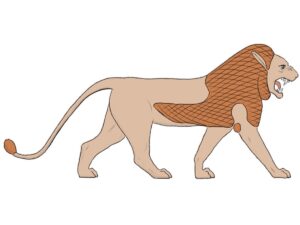Medieval Art: From Theory to Practice
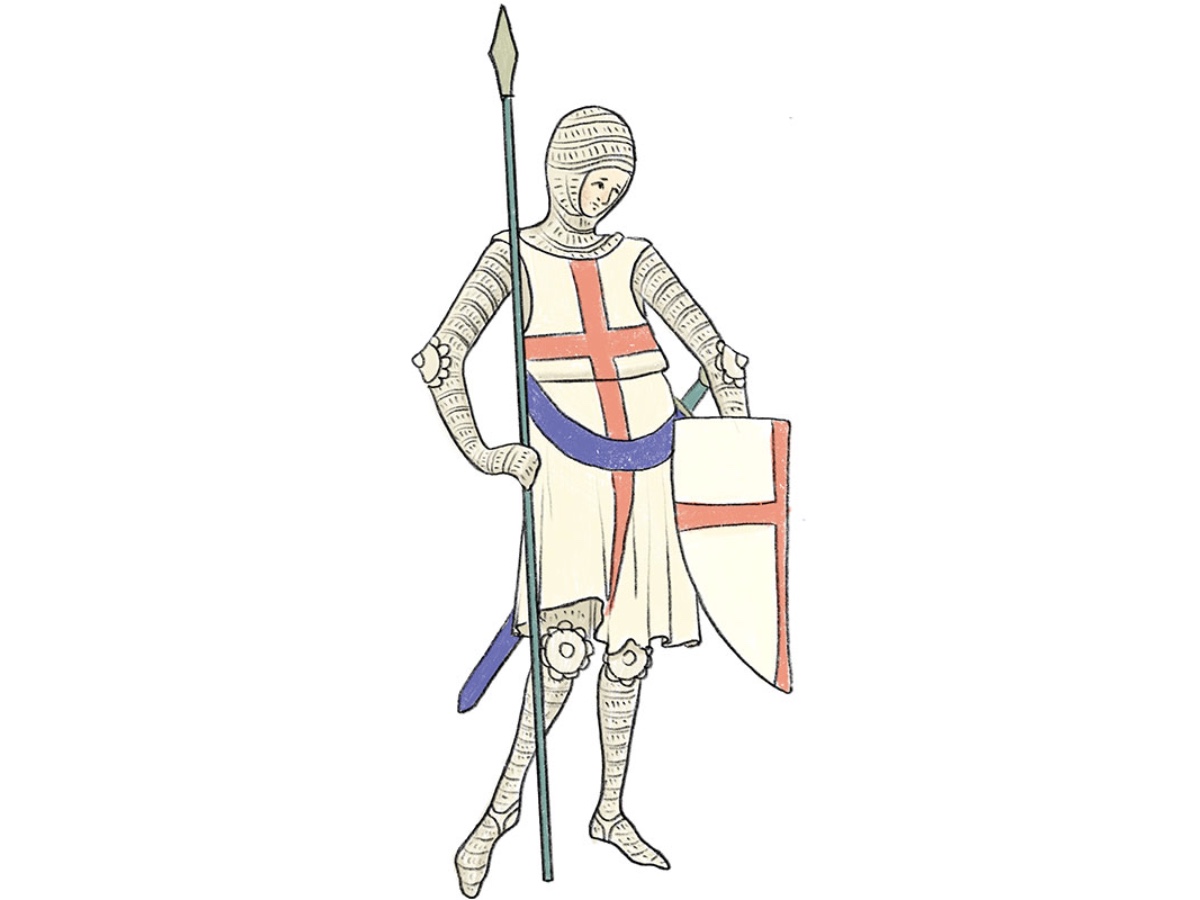
Medieval painting spans the period from roughly the 5th to the 15th centuries and is characterized by significant regional variations and a transition from early Christian art to the Romanesque and Gothic styles.
This period also includes Byzantine art, the art of migratory peoples, and various regional schools within Europe.
Periods of Medieval Art
- Early Christian art (before 500 AD): The plots were often based on biblical stories, with a strong emphasis on symbolism. Early Christian artists used mosaics and frescoes to decorate churches and tombs. The images did not strive for realism, but rather to convey spiritual ideas.
- Byzantine art (c. 330 – 1453): Byzantine art developed in the Byzantine Empire, centered in Constantinople. Byzantine artists were famous for their icons and magnificent mosaics, which often had a golden background and gave the impression of a sacred space. Strict symbolism, lack of perspective and bright colors.
- Romanesque art (c. 1000 – 1200): Romanesque painting is often associated with architecture, with frescoes decorating church interiors. Religious subjects predominated, the images were stylized and symbolic. During this period, more advanced painting techniques began to be used, such as more complex paints and bases.
- Gothic art (c. 1200 – 1400): Gothic painting features brighter colors and attention to light, especially in stained glass. Gradually, greater realism was introduced into art, especially in the depiction of human figures and landscapes. Included the development of oil painting and improving the quality of pigments.
Features of Medieval Art
- Religious themes: Most of the works were religious, serving educational and propaganda purposes.
- Symbolism: Medieval art used an extensive symbolic language that was understandable to contemporaries.
- Static and hieratic: Figures were often presented as static, with an emphasis on spirituality rather than physical reality.
- Gold background: Gold background was used to emphasize the sacredness of the scenes or figures depicted.
- Lack of perspective and shadow: Medieval painting rarely used perspective or shadow techniques to achieve dimension and realism.
Practical Drawing Tips
So, above we looked at the main points associated with this type of art. But our site is still dedicated not just to stories about this or that style, but to how to master these styles.
We will try to draw a knight and make this work look like it was created by a medieval artist.
You can create this drawing using standard tools such as paper, brushes and pencils, or you can imitate these tools using digital tools.
How to Draw in Medieval Style Step by Step
Step 1: Sketch the head and torso
In the Middle Ages, drawing a person could begin both with specific details and with outlining basic forms. Let’s use the second option and sketch the head and draw the torso.
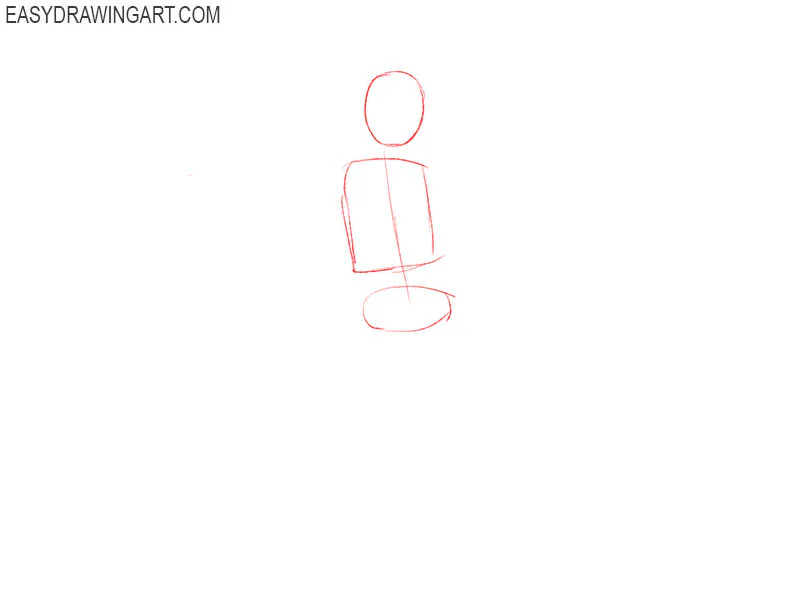
Step 3: Add the limbs to the medieval knight
In medieval works we can often see quite incorrect proportions in animals, but nevertheless, human figures were often drawn quite correctly. By outlining the limbs with simple lines, we simplify the work on proportions.
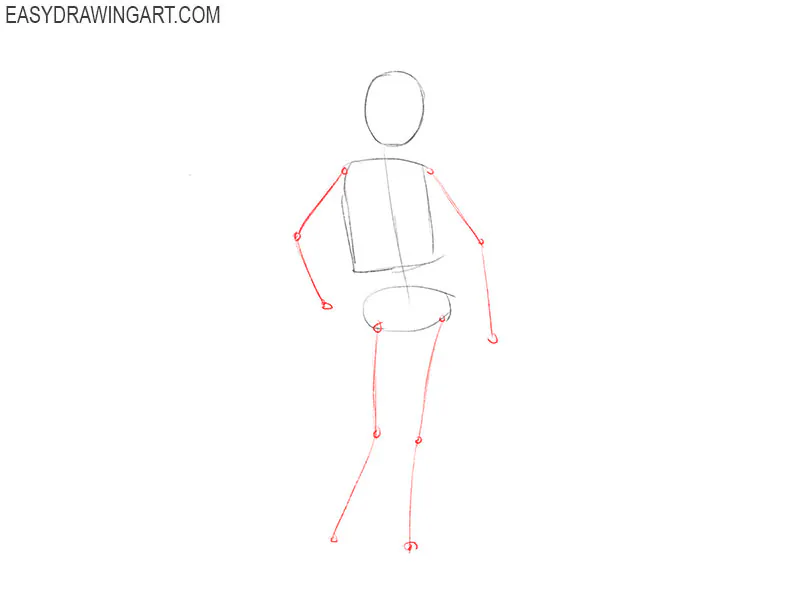
Step 2: Start adding volume and form
There was little volume in medieval artworks, but nevertheless, there was some basic understanding of the three-dimensionality of space. By outlining the torso and neck, simplify the work on the details.
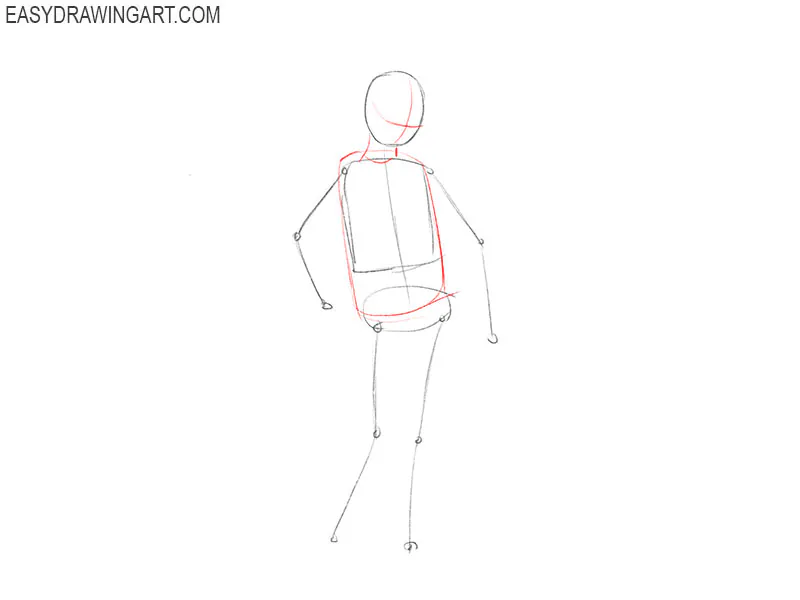
Step 4: Add some volume to the limbs
In the case of the limbs, as in the case of the torso, we need to create the most basic volumes. But let us remind you that you should not try to make the body details too voluminous so as not to go out of style.
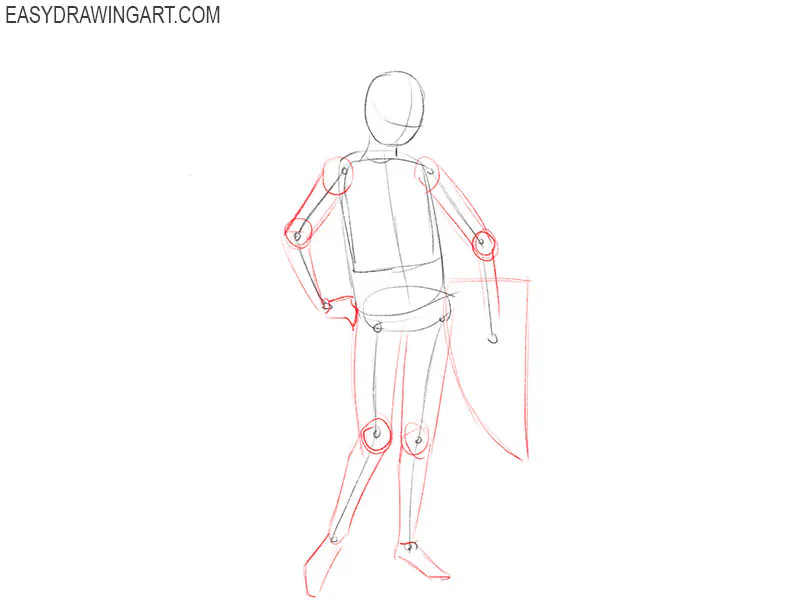
Step 5: Draw the face in detail
Faces in medieval works, especially in illustrations for books, were drawn as schematically as possible, almost like in modern children’s cartoons.
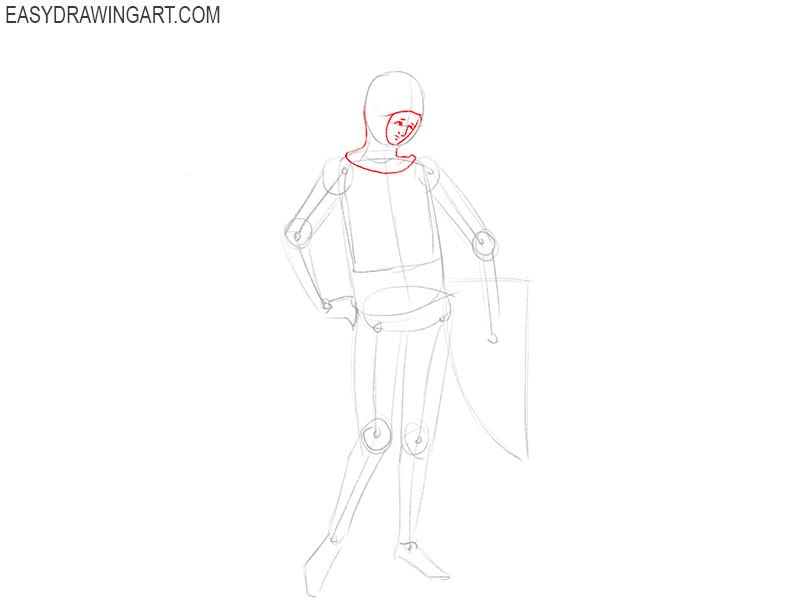
Step 6: Draw the medieval garment
In medieval drawings we can often see quite good work with folds that can look quite natural. Try to repeat their shape on this item of garment.
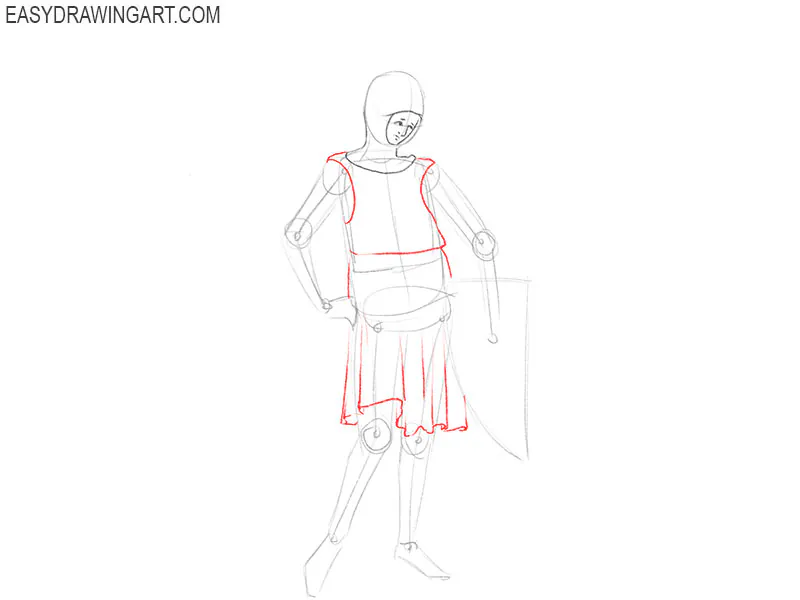
Step 7: Draw the medieval shield and Insignia
In the works of medieval artists, various coats of arms, patterns and other insignia were very common. Let’s draw a simple pattern in the form of a cross on clothes and a knight’s shield.
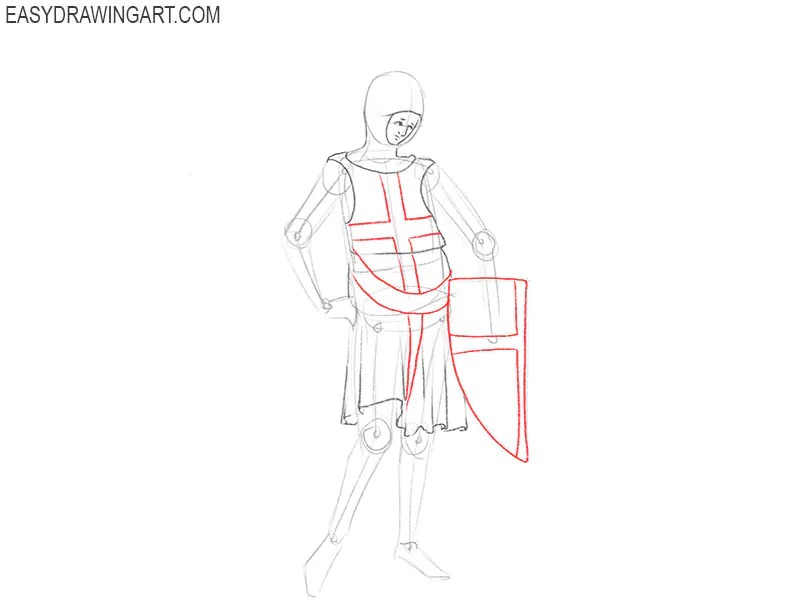
Step 8: Detail the limbs and medieval armor
Now take a darker tool, such as a marker or a brush with black paint, and outline the outlines of the limbs, giving the drawing of a medieval knight a more contrasting look.
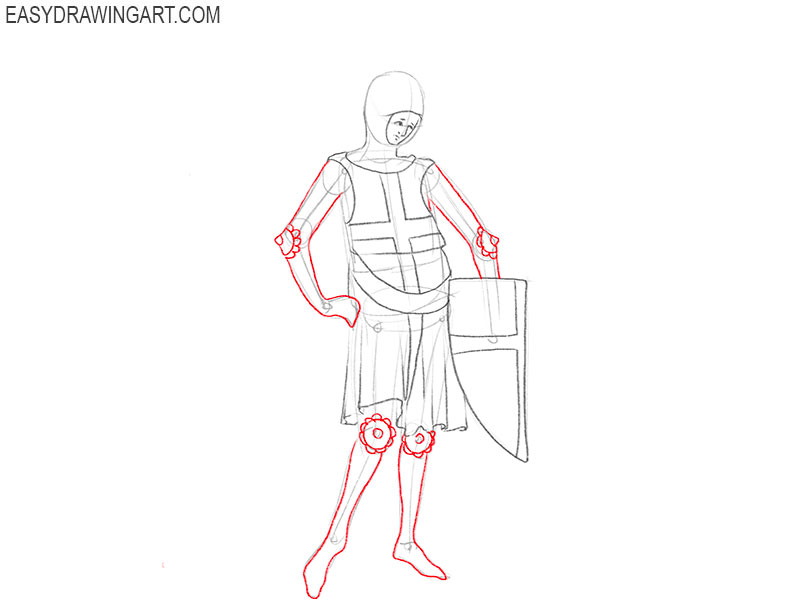
Step 9: Add the spear
The weapons, along with the patterns, will give your drawing a more distinctive medieval look. You can sketch a spear like in our example, draw a bow, mace, or any other weapon.
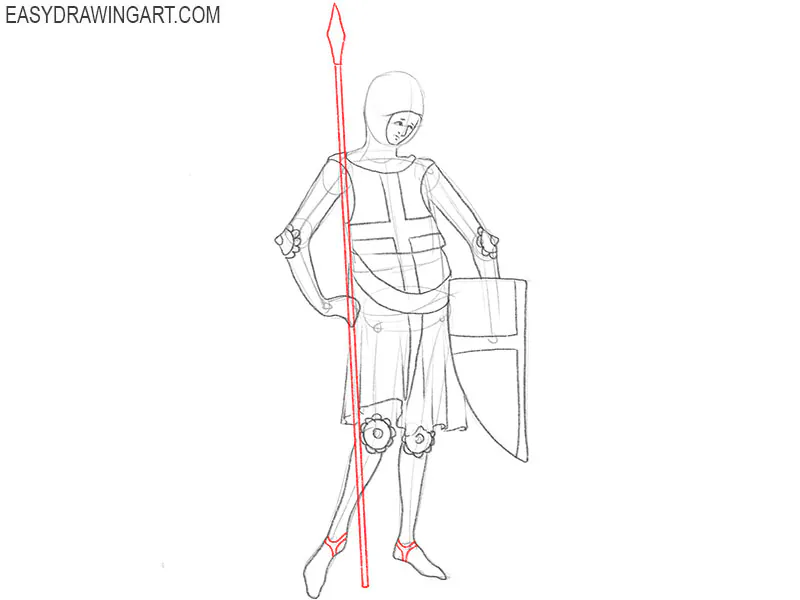
Step 10: Draw the chain mail
Medieval artists often paid special attention to various details, such as chain mail. Using a large number of evenly spaced transverse lines draw the chain mail pattern.

Step 11: Add the sword to your medieval artwork
The sword is one of the most recognizable elements of a knight’s equipment. So draw the sword and add cross lines on the chain mail.
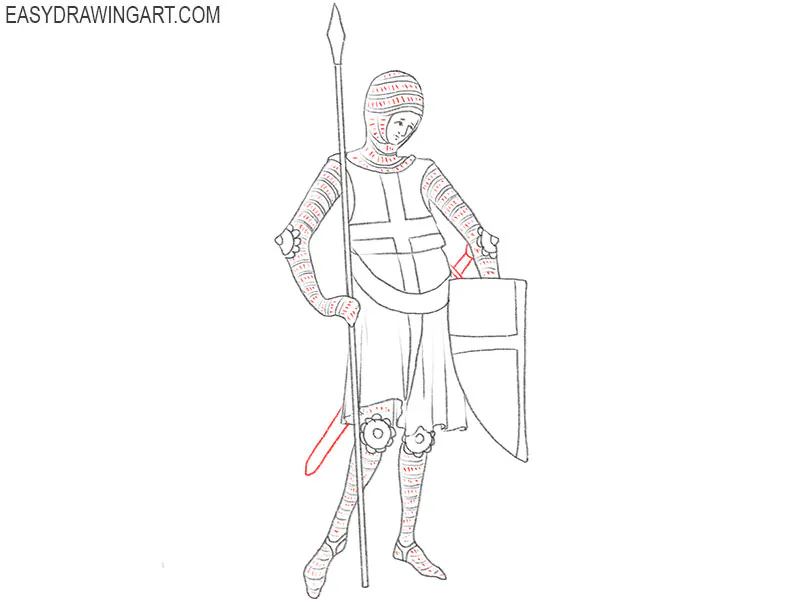
Step 12: Paint the medieval chain mail
Let’s now color the knight, trying to give the drawing as medieval a look as possible. Use beige to color the knight’s chain mail as evenly as possible.
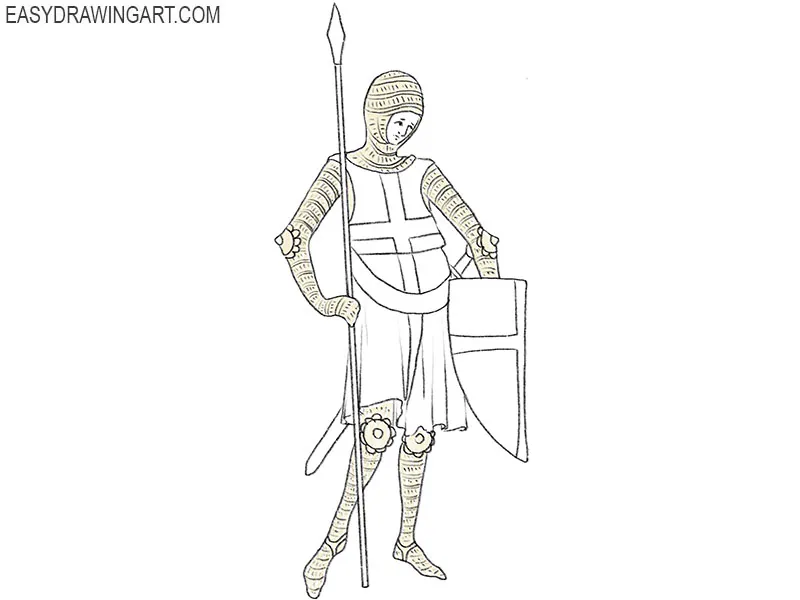
Step 13: Paint the medieval garment and shield
Now, using shades of beige and ivory, paint the garment and shield, trying to make the tone as uniform as possible over the entire surface.
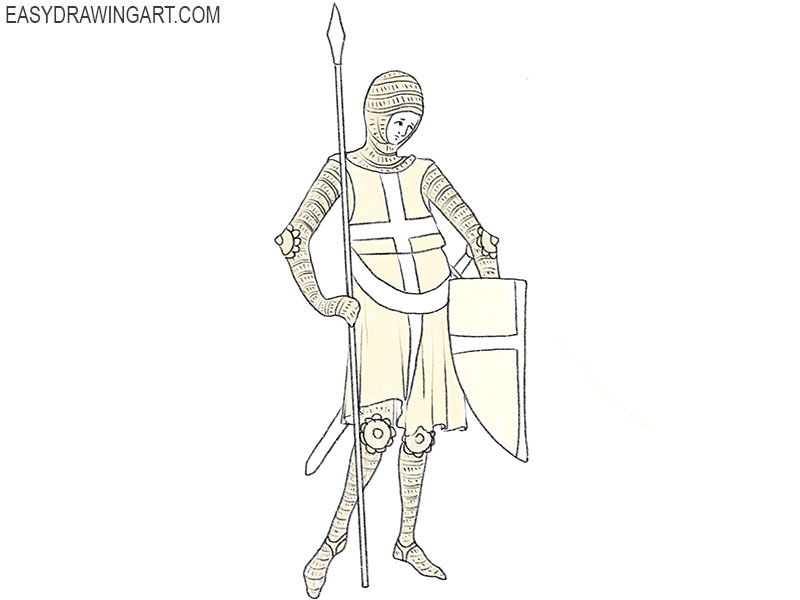
Step 14: Paint the Insignia
Now let’s add some accent colors. Using red, paint the cross on the shield and garment. Next, use blue to paint the belt and scabbard of the sword.

Step 15: Paint the spear of the medieval knight
When painting weapons, like the rest of the artwork, try to stick to more muted tones. Due to the peculiarities of creating paints, medieval works are very easily recognized by us in our time.
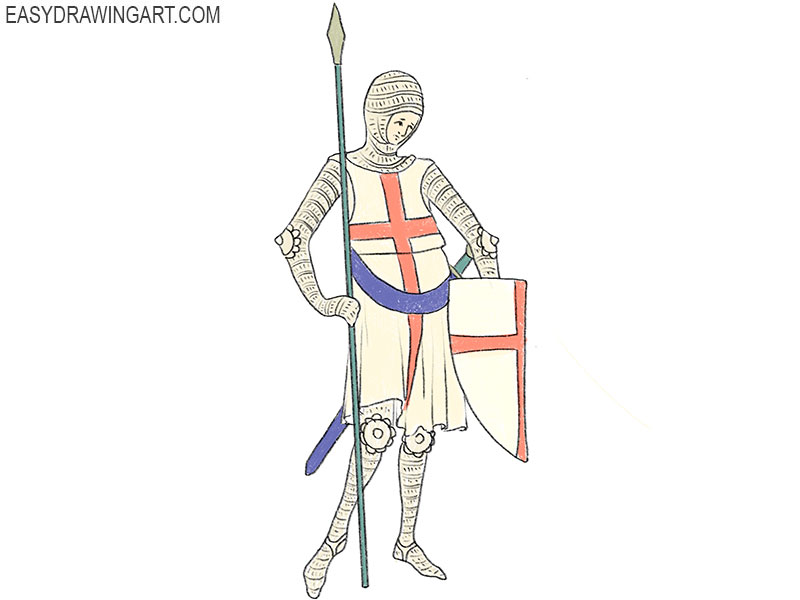
Step 16: Add shadows to your medieval art
Although medieval works were very flat, artists still tried to add volume using the knowledge available to them. The shadows should be very light and almost invisible in the image.
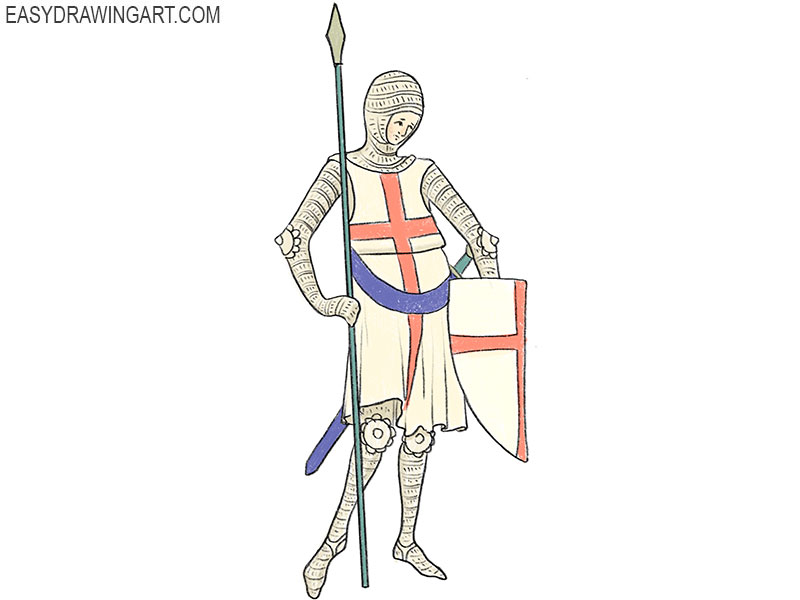
Summarizing
Medieval painting represents a unique stage in the history of art. This period lays the foundation for the development of more realistic styles that appear during the Renaissance.
When creating medieval style drawings, it is important to remember that the emphasis is on spiritual and symbolic representation rather than physical realism or accuracy.
To achieve the most convincing result, you need to try to imitate the approach of medieval artists as closely as possible, as we showed in our tutorial.


